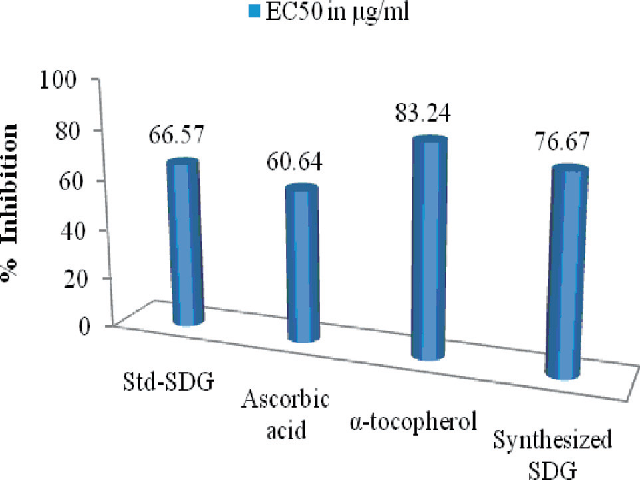Secoisolariciresinol Diglucoside - A Phytoestrogen Nutraceutical of Flaxseed: Synthesis and Evaluation of Antioxidant Potency
DOI:
https://doi.org/10.5530/ax.2011.4.6Keywords:
Lignans, Polyphenol, Antioxidant, Diabetes, Cancer, DNA ProtectionAbstract
This paper evaluates critically the science base that underpins the argument that oxidative damage is a significant causative factor in the development of human diseases and that antioxidants are capable of preventing or ameliorating these disease processes. Lignans, as polyphenol compounds, have been reported to serve as good and healthy nutrients. By reason of possessing many biological activities, it takes a major part in curing degenerative diseases. Secoisolariciresinol diglucoside (SDG), the chief lignan found in flaxseed, is believed to reduce serum cholesterol levels, delay the onset of type II diabetes and decrease formation of breast, prostate and colon cancers. These health benefits of SDG may be partially attributed to its antioxidant properties. Retrospectively of the above information, in the present study, SDG was synthesized for the first time and screened for its antioxidant properties. The synthetic route of SDG used the coupling of two molecules of 3,4-dimethoxy toluene with dibromobutanediol as the key step to yield the SDG skeleton. The synthesized SDG was found to have potential antioxidant activity. It scavenges the DPPH radical at EC50 of 76.67μg/ml which is comparable to that of antioxidant references namely Ascorbic acid, Std-SDG and α-tocopherol (60.64, 66.57, 83.24μg/ml) respectively. Further, its dose dependent reducing power was observed. The synthesized SDG showed 1.25 times higher activity compared to α-tocopherol and lesser activity (0.70, 0.75 times) compared to Ascorbic acid and Std-SDG respectively. Additionally, it was found to protect DNA from hydroxyl radicals generated by an oxidant agent as Fenton’s reagent at a concentration of 0.5 mg/ml.
Downloads
Metrics





